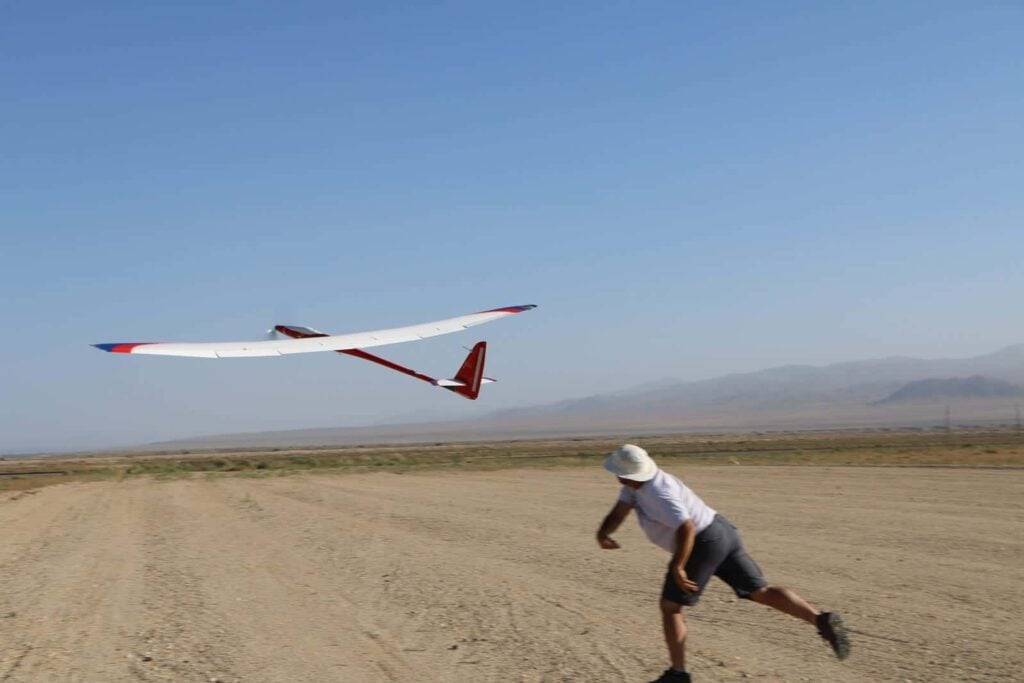The Nevada Institute for Autonomous Systems (NIAS) has announced that it has teamed up with the Nevada Governor’s Office of Economic Development (GOED) and Microsoft’s Unmanned Aerial System (UAS) research team to test Artificial Intelligence (AI) in a 16 ½ -foot, 12 ½- pound sailplane.
The sailplane that Microsoft is testing in Nevada relies on a battery to run onboard computational equipment and controls such as the rudder, plus radios to communicate with the ground. It also has a motor so that a pilot can take over manual operation when necessary. But once it is up in the air, the UAS demonstrated its ability to operate on its own, finding and using thermals to travel without the aid of the motor or a person.
Simple and complex Unmanned Aerial System (UAS) testing was conducted at the Hawthorne Advanced Drone Multiplex (HADM) Test Range located at Hawthorne, Nevada. HADM is a 230-square mile area where a variety of UAS applications can be tested including AI. NIAS manages the FAA-designated Nevada UAS Test Site which includes HADM and other UAS test ranges across Nevada. The Microsoft operation was based at the Hawthorne Industrial Airport where preliminary tests were made. Subsequent tests were conducted at an area east of Walker Lake around six miles from the airport. The team flew three different sail planes that reached an altitude of approximately 1700 feet flying almost two dozen Nevada UAS Test Site Certification of Authorization (COA) flights.
“Innovative AI technology like what Microsoft tested with NIAS is clearly where the most dramatic global UAS Industry disruptions will occur. When you think of artificial intelligence or AI, there are many perspectives on the value-add to the UAS Industry. Very evident to me, developing and testing AI, or machine learning technology, is going to have multiple applications that will significantly benefit the UAS Industry and the American way of life. This is one of the most exciting developments I have seen over the past several years in Nevada and globally,” said Dr. Chris Walach, Director of the FAA-designated Nevada UAS Test Site.
“Microsoft researchers have created a system that uses artificial intelligence to keep the sailplane in the air without using a motor, by autonomously finding and catching rides on naturally occurring thermals, like how wild birds stay aloft. Birds do this seamlessly, and all they’re doing is harnessing nature and they do it with a peanut-sized brain,” says Ashish Kapoor, a principal Microsoft researcher.
“Nevada wholeheartedly supports the growth of the Unmanned Aerial System industry, and teaming with global technology leader Microsoft to perform these Nevada-based tests speaks to our leadership role with the global community. Governor Sandoval and our Legislature expect us to engage in the growth of transformative technologies and I am grateful for the opportunity afforded by Microsoft to team and to do just that,” said Tom Wilczek, Industry Specialist for the Nevada Aerospace and Defense Industry for the Governor’s Office of Economic Development.



















